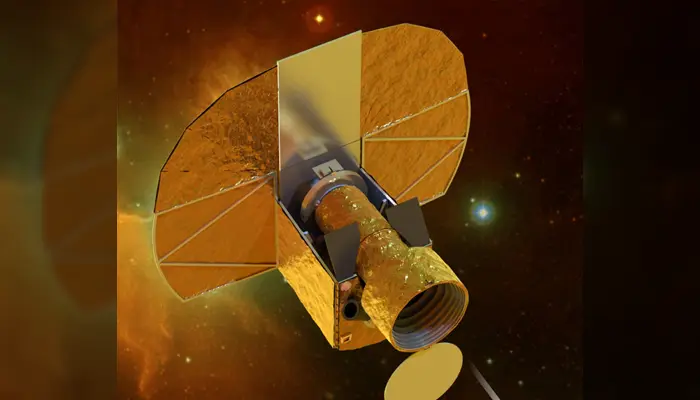Astronomers Discover New Earth-sized Planet: Ongoing & Upcoming Missions in Search of Exoplanet
- Admin
- 1 year ago
- 3 minutes read

Astronomers detected one Earth-sized planet located 55 light-years away from us!
The planet is named Speculoos-3b or Search for Planets EClipsing ULtra-cOOl Stars. The newly discovered “Earth-sized planet orbits around an ultracool dwarf star similar in size to Jupiter,” as per Guardian reports. Rising global warming and climate change prompted scientists hunt for an alternative to Earth. Ever since the first confirmation of exoplanet in the 1990s, numerous missions and strong telescopes have been employed on this hunt. In this article, we will discuss about ongoing and future missions to discover habitable planets.
Missions by European Space Agency (ESA):
ESA has dedicated fleets for the hunt of exoplanets.
CHEOPS: In 2019, CHEOPS, or CHaracterising ExOPlanet Satellite was launched. This specialized telescope is on a mission to characterise already discovered exoplanets, measuring their radii, masses, ingredients, and atmospheres.

PLATO and ARIEL: ESA is now preparing for PLATO mission or PLAnetary Transits and Oscillations of stars. This is accompanied by ARIEL or Atmospheric Remote-Sensing Infrared Exoplanet Large-survey. Both are set to launch in 2026 and 2029 respectively. PLATO mission will observe Earth-like planets with long orbits around their Sun-like stars. The ARIEL mission will examine the atmospheres of these exoplanets.
The Nancy Grace Roman Space Telescope is slotted to launch in 2026 which will help finding new exoplanets using microlensing effects.
Missions by NASA:
NASA has been continuously looking for alternative to Earth for last couple of decades. Following are the NASA missions for exoplanet search.
Kepler and K2: NASA's Kepler Space Telescope, made discovery of numerous exoplanets. According to NASA: “In its first mission, from 2009 to 2013, Kepler monitored more than 150,000 stars, watching for tiny dips in starlight as planets crossed in front of their stars.”
Spitzer Space Telescope: It is another observatory to characterize exoplanets. This is the first-ever mission solely dedicated to “detect light from an exoplanet, and its data has revealed the composition, temperature, and even likely wind patterns on faraway exoplanets,” as mentioned by NASA.
TESS: Apart from the strongest known observatory, James Webb Space Telescope, the Transiting Exoplanet Survey Satellite or TESS is employed for searching the most promising exoplanets. TESS is designed to observe at least 85% of the sky.

Hubble Space Telescope: Hubble's high-powered optics have generated some of the most amazing images. “One of the first directly-imaged exoplanets, Fomalhaut b, was discovered in images taken by Hubble,” as mentioned on NASA website.
Roman Space Telescope: The Nance Grace Roman Space Telescope (previously known as WFIRST) is another NASA observatory to get essential questions about dark energy and exoplanets.
More about Speculoos-3b:
The discovery was made by the SPECULOOS project which is conducted by the University of Liege, in Belgium, the Universities of Birmingham, Cambridge, Bern, and the Massachusetts Institute of Technology (MIT). It was made possible by a network of robotic telescopes around the world.
Michaël Gillon, an astronomer at the University of Liège in Belgium and an author of the study, said, “We believe that the planet rotates synchronously, so that the same side, called the day side, always faces the star, just like the moon does for the Earth. On the other hand, the night side hand, would be locked in endless darkness.”

Meanwhile, the scientists started working with SPECULOOS prototype using the TRAPPIST telescope and discovered the famous TRAPPIST-1 in 2017.
Advanced next-generation instruments will surely bring us closer to the long-anticipated habitable exoplanets, “a habitable world somewhere in the galaxy with an atmosphere that reminds us of our own,” as described by NASA.



.WEBP)








